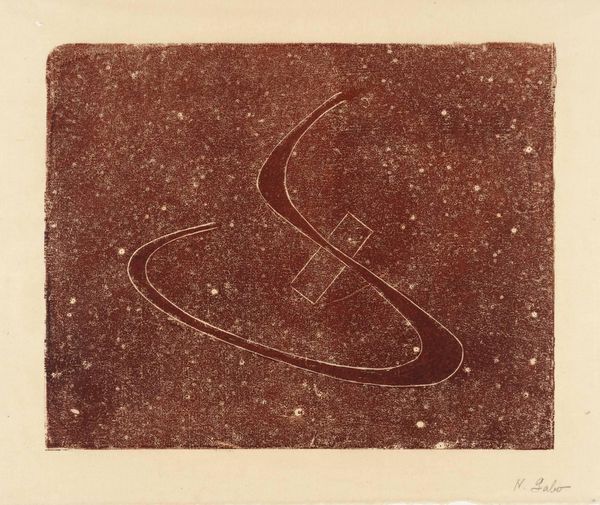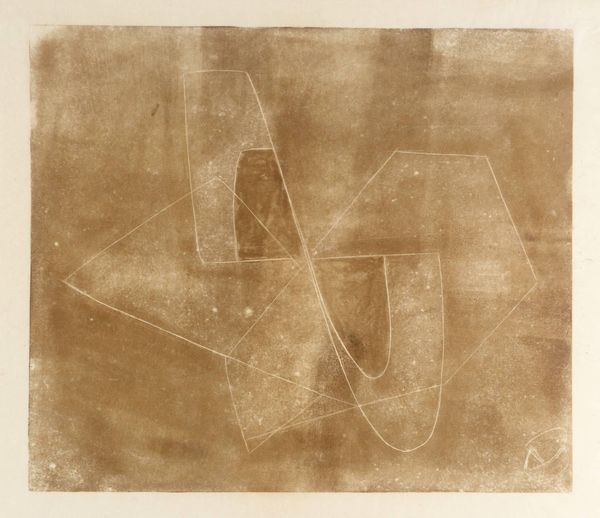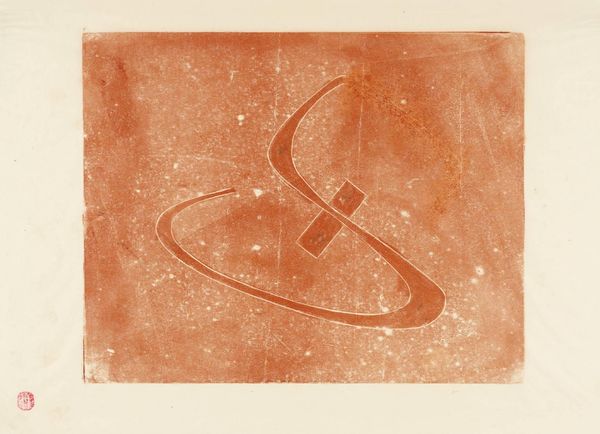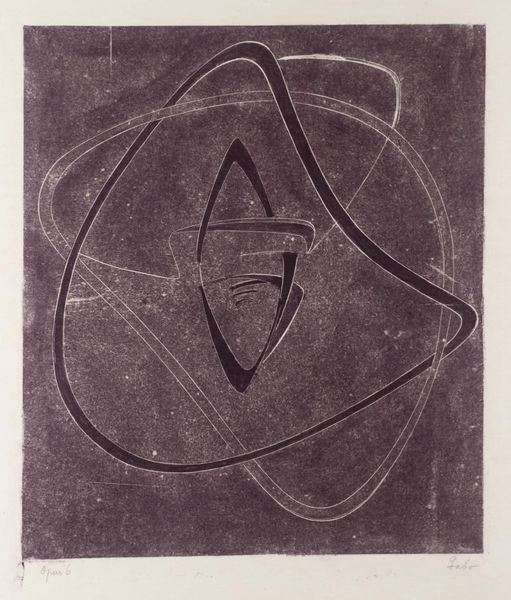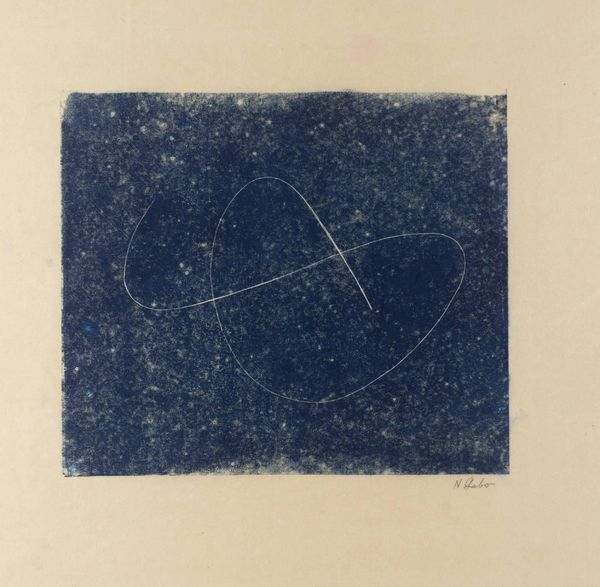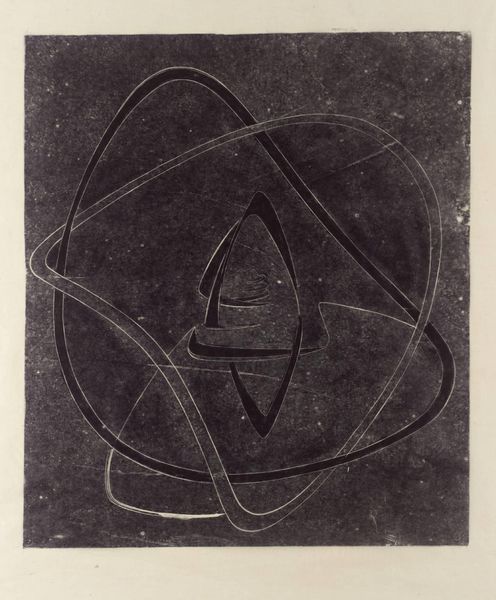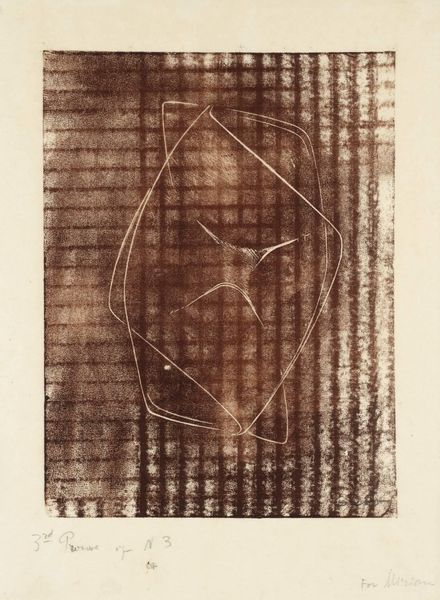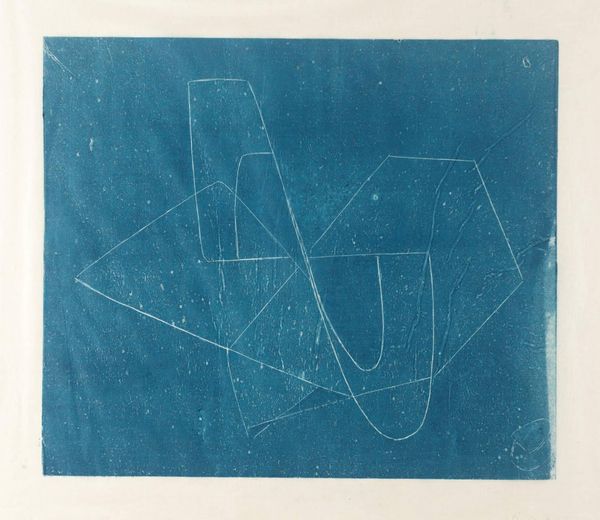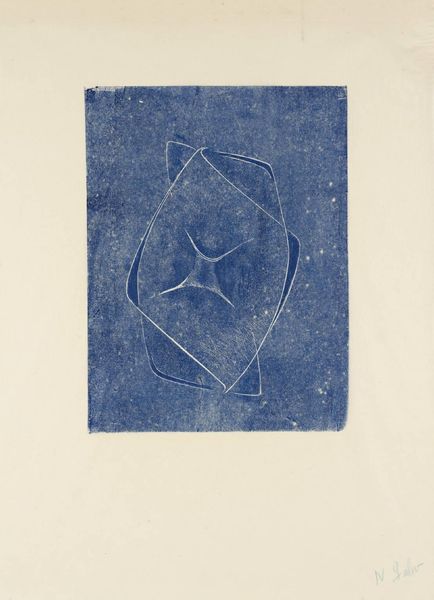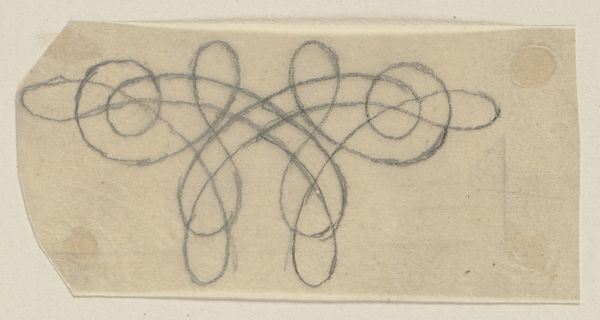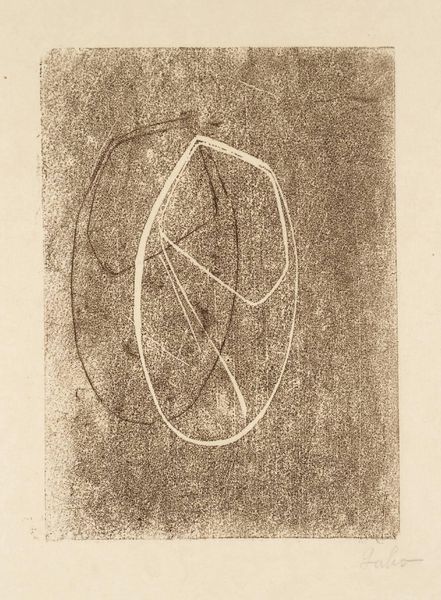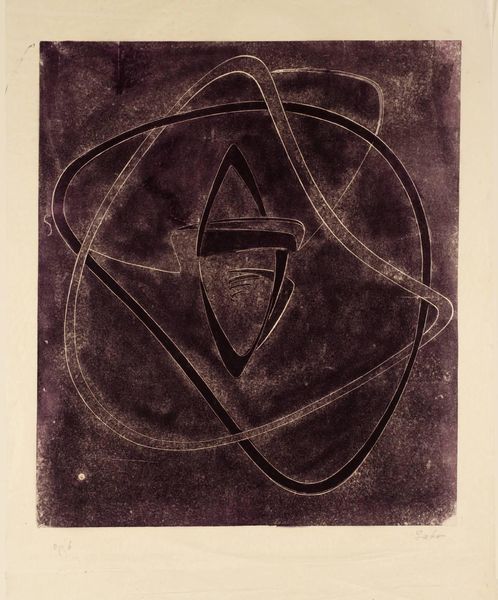
Dimensions: image: 203 x 253 mm
Copyright: The Work of Naum Gabo © Nina & Graham Williams/Tate, London 2014 | CC-BY-NC-ND 4.0 DEED, Photo: Tate
Editor: This is Naum Gabo's "Opus 7," a print housed at the Tate. It feels so simple and modern. What do you make of it? Curator: Gabo's work reflects a utopian vision, deeply influenced by the constructivist movement in post-revolutionary Russia. How might this image challenge traditional notions of art and its role in society? Editor: I see how it breaks from the past! It’s like he’s building a new visual language. Curator: Exactly! Gabo aimed to create art that reflected the dynamism of the modern world. Consider how the limited color palette and geometric forms speak to a sense of industrial progress and social change. Editor: It’s incredible how much history is embedded in such an abstract image. Curator: Indeed. By understanding the social and political context, we gain a deeper appreciation for the radical nature of Gabo’s vision and the public role he envisioned for art.
Comments
Join the conversation
Join millions of artists and users on Artera today and experience the ultimate creative platform.
tate 8 months ago
⋮
In 1935 the Russian-born artist Naum Gabo, a pioneer of abstraction, arrived in England as a refugee. He influenced the development of Modernism in the 1930s and 1940s and was associated with the artists Ben Nicholson and Barbara Hepworth, his neighbours in the fishing village of St Ives during the Second World War. After the war he moved to the USA. There are strong holdings of Gabo's work in the Collection as a result of his stay in England and of his friendship with a previous Tate Director, Sir Norman Reid. Gabo's celebrated geometric constructions (see Archive display) examine the object in space. These wood engravings reflect his sculptural concerns in a two-dimensional format. Gallery label, August 2004
